Difference between revisions of "Pig leather"
| Line 42: | Line 42: | ||
<p> </p> | <p> </p> | ||
| − | == | + | ==Pig leather [[leather clothing]]== |
Am häufigsten trifft man auf Schweinsleder bei [[Lederbekleidung|Bekleidung]]. Neben dem [[Lammleder]] und [[Ziegenvelours]] ist es die häufigste [[Lederarten|Lederart]] bei Lederbekleidung. Alle drei [[Lederarten|Ledersorten]] sind leicht und nicht zu warm und daher ideal als Freizeitbekleidung. Nur bei Motorradkombis dominiert das [[Rindsleder]]. Es ist deutlich dicker und reißfester und aus Sicherheitsgründen dort die erste Wahl. Das Leder des Peccary wird vorwiegend zu hochwertigem Handschuhleder verwendet. | Am häufigsten trifft man auf Schweinsleder bei [[Lederbekleidung|Bekleidung]]. Neben dem [[Lammleder]] und [[Ziegenvelours]] ist es die häufigste [[Lederarten|Lederart]] bei Lederbekleidung. Alle drei [[Lederarten|Ledersorten]] sind leicht und nicht zu warm und daher ideal als Freizeitbekleidung. Nur bei Motorradkombis dominiert das [[Rindsleder]]. Es ist deutlich dicker und reißfester und aus Sicherheitsgründen dort die erste Wahl. Das Leder des Peccary wird vorwiegend zu hochwertigem Handschuhleder verwendet. | ||
| Line 59: | Line 59: | ||
</p> | </p> | ||
<p align=center> | <p align=center> | ||
| − | '' | + | ''Pig leather is often offered at low prices.''<br></p> |
<p> </p> | <p> </p> | ||
| Line 67: | Line 67: | ||
</p> | </p> | ||
<p align=center> | <p align=center> | ||
| − | ''[[ | + | ''[[Finish|Finished (pigmented)]] pig leather can still be recognized by the [[Leather hair pores - Hair follicles|prominent pores]].''<br></p> |
<p> </p> | <p> </p> | ||
| − | ==[[ | + | ==[[Leather book cover|Book covers]] and [[leather handbags|handbags]]== |
Neben dem [[Bekleidungsleder]] wird Schweinsleder auch als Innenfutter für [[Lederhandtaschen|Handtaschen]] verwendet oder für [[Bucheinband|Bucheinbände]]. | Neben dem [[Bekleidungsleder]] wird Schweinsleder auch als Innenfutter für [[Lederhandtaschen|Handtaschen]] verwendet oder für [[Bucheinband|Bucheinbände]]. | ||
| Line 79: | Line 79: | ||
</p> | </p> | ||
<p align=center> | <p align=center> | ||
| − | ''[[ | + | ''[[Leather book cover|Book cover]] made of pig leather from the collection of [http://www.feinleder-hoffmann.com www.feinleder-hoffmann.com]. - Pig leather as covering material in a [[leather handbags|handbag]].''<br></p> |
<p> </p> | <p> </p> | ||
==Peccary== | ==Peccary== | ||
| − | + | Peccary is the name for pig leather from the hides of wild-living, [https://www.youtube.com/watch?v=LDmkdFwqTt8&list=PLdGEmp0I4Bawry89Il_c1uc1F7M0Tr7sx South American] nelfer pigs. The term "peccary" originates from the indigenous [https://www.youtube.com/watch?v=LDmkdFwqTt8&list=PLE1C68DCF3DA8680D Brazilian] Tupi language and roughly describes "an animal that treads many paths in the forest". Due to the free life in nature, the leather often has [[Natural markings on leather|scars and other defects]], which should be regarded as an authenticity feature. Peccary is used for valuable [[leather gloves|gloves]] due to its suppleness. It is also a popular source of food because of its aromatic meat. | |
| Line 101: | Line 101: | ||
</p> | </p> | ||
<p align=center> | <p align=center> | ||
| − | ''Peccary | + | ''Peccary pig. Soft [[leather gloves|glove leather]] of the peccary with visible [Leather hair pores - Hair follicles|hair pores]] (available at [http://www.heinzbauer.com/index.php?clang=&nr= www.heinzbauer.com]).''<br></p> |
<p> </p> | <p> </p> | ||
| − | Peccary | + | Peccary should not be confused with the similarly [[carpincho leather]], which is of a [https://www.youtube.com/watch?v=LDmkdFwqTt8&list=PLdGEmp0I4Bawry89Il_c1uc1F7M0Tr7sx South American] large rodent type. |
| − | == | + | ==Pig leather furniture== |
| − | + | [[leather furniture|Furniture]] made of pig leather usually does not exist because the leather is [[leather quality|too thin and too less tear resistant]] for this purpose. | |
| Line 116: | Line 116: | ||
</p> | </p> | ||
<p align=center> | <p align=center> | ||
| − | '' | + | ''Pig leather is not suitable as a [[leather furniture|upholstery]] leather.''<br></p> |
<p> </p> | <p> </p> | ||
| − | ==[[ | + | ==[[Leather luggage|leather suitcase]] made of pig leather== |
| − | In [https://www.youtube.com/watch?v= | + | In [https://www.youtube.com/watch?v=LDmkdFwqTt8&list=PLdGEmp0I4Bawry89Il_c1uc1F7M0Tr7sx South America], suitcases made of pig leather are spread. |
| Line 129: | Line 129: | ||
</p> | </p> | ||
<p align=center> | <p align=center> | ||
| − | '' | + | ''Typical [[Leather luggage|leather suitcase]] made of pig leather.''<br></p> |
<p> </p> | <p> </p> | ||
| − | == | + | ==A [[leather saddle#Bicycle saddle|bicycle saddle]] made of pig leather== |
| − | + | Apparently there were also [[leather saddle#Bicycle saddle|bicycle saddles]] made of pig leather. An unusual application due to the [[leather quality|poor stability]] of this leather. | |
| Line 141: | Line 141: | ||
</p> | </p> | ||
<p align=center> | <p align=center> | ||
| − | '' | + | ''Very curious: An old [[leather saddle#Bicycle saddle|bicycle saddle]] made of pig leather.''<br></p> |
<p> </p> | <p> </p> | ||
| Line 153: | Line 153: | ||
</p> | </p> | ||
<p align=center> | <p align=center> | ||
| − | ''[[Exotic leather|Leather of different animal species - Exotic leather]]'' | + | ''[[Exotic leather|Leather of different animal species - Exotic leather]].'' |
</p> | </p> | ||
== Additional information == | == Additional information == | ||
| − | * [[ | + | * [[Types of leather]] |
| − | * [[ | + | * [[Leather clothing]] |
| − | * [[ | + | * [[Exotic leather]] |
Revision as of 15:36, 12 February 2017
Contents
Schweinsleder
Auf der Welt gibt es ca. 950 Mio. Schweine (Stand 2005). Davon werden jährlich fast 100% geschlachtet. Schweine werden im Alter von 6 bis 10 Monaten geschlachtet. Schweinsleder sind mit ca. 5 bis 7% der Weltproduktion an vierter Stelle nach Rindsledern, Schafsledern und Ziegenledern.
Schweinefleisch nach chinesischer Art - nach griechischer Art
Man unterscheidet das Leder von Hausschweinen, allgemein Pork genannt, von dem der Wildschweine, deren für die Lederindustrie bedeutendster Vertreter das Peccary ist. Besonders das europäische Hausschwein liefert ein Leder, das überaus fettreich ist. Hausschweine sind nur geringfügig behaart. Charakteristisch für die Optik des Schweinsleders sind die in Gruppen angelegten Löcher der Haarborsten. Meist sind es Dreiergruppen. Die Faserstruktur innerhalb der Schweinslederhaut ist sehr unterschiedlich. Am Kopf und in der Flanke ist das Leder locker und schwammig, in der Flanke dagegen manchmal hornartig verhärtet.
Hausschwein
Pork-Velour - Gut erkennbar: die Poren der Haarkanäle
Wildschwein - Wildschweinfell
Pig leather leather clothing
Am häufigsten trifft man auf Schweinsleder bei Bekleidung. Neben dem Lammleder und Ziegenvelours ist es die häufigste Lederart bei Lederbekleidung. Alle drei Ledersorten sind leicht und nicht zu warm und daher ideal als Freizeitbekleidung. Nur bei Motorradkombis dominiert das Rindsleder. Es ist deutlich dicker und reißfester und aus Sicherheitsgründen dort die erste Wahl. Das Leder des Peccary wird vorwiegend zu hochwertigem Handschuhleder verwendet.
Insbesondere im preiswerteren Segment der Lederbekleidung wird sehr viel Schweinsleder verarbeitet, meist als Veloursleder, aber gelegentlich auch als pigmentiertes Glattleder. Schweinsleder ist für den Bekleidungshersteller preiswerter als Lammleder. Schweinsleder ist im Vergleich zum hochwertigeren Lamm- und Ziegenleder weniger reißfest und fühlt ich im Vergleich zum weichen Lammleder oder Ziegenvelour i.d.R. pappiger an. Oft wird das Leder in der Bekleidung als Porc gekennzeichnet. Beim Velour spricht man dann vom Porcvelours.
Pig leather is often offered at low prices.
Finished (pigmented) pig leather can still be recognized by the prominent pores.
Book covers and handbags
Neben dem Bekleidungsleder wird Schweinsleder auch als Innenfutter für Handtaschen verwendet oder für Bucheinbände.
Book cover made of pig leather from the collection of www.feinleder-hoffmann.com. - Pig leather as covering material in a handbag.
Peccary
Peccary is the name for pig leather from the hides of wild-living, South American nelfer pigs. The term "peccary" originates from the indigenous Brazilian Tupi language and roughly describes "an animal that treads many paths in the forest". Due to the free life in nature, the leather often has scars and other defects, which should be regarded as an authenticity feature. Peccary is used for valuable gloves due to its suppleness. It is also a popular source of food because of its aromatic meat.
Peccary pig. Soft glove leather of the peccary with visible [Leather hair pores - Hair follicles|hair pores]] (available at www.heinzbauer.com).
Peccary should not be confused with the similarly carpincho leather, which is of a South American large rodent type.
Pig leather furniture
Furniture made of pig leather usually does not exist because the leather is too thin and too less tear resistant for this purpose.
Pig leather is not suitable as a upholstery leather.
leather suitcase made of pig leather
In South America, suitcases made of pig leather are spread.
Typical leather suitcase made of pig leather.
A bicycle saddle made of pig leather
Apparently there were also bicycle saddles made of pig leather. An unusual application due to the poor stability of this leather.
Very curious: An old bicycle saddle made of pig leather.
Video about leather of different animal species
Leather of different animal species - Exotic leather.
Additional information







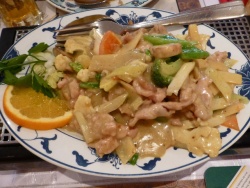
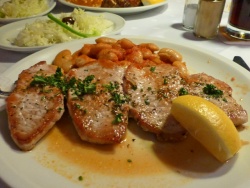
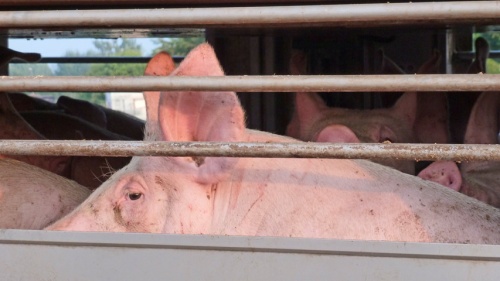
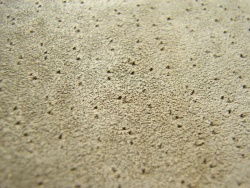
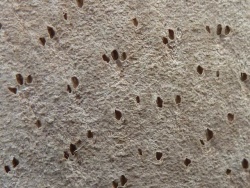
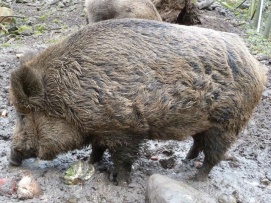
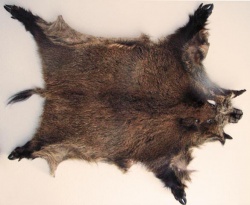

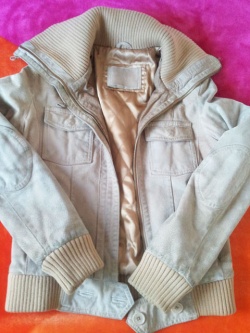
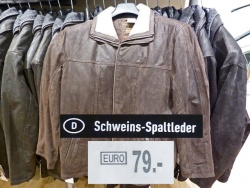
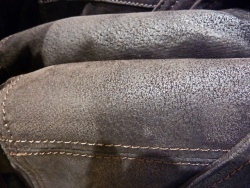
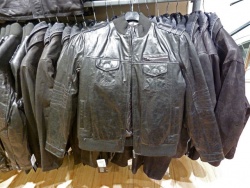
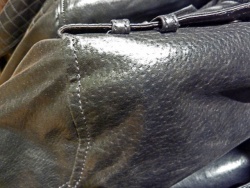
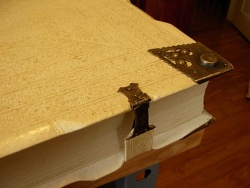
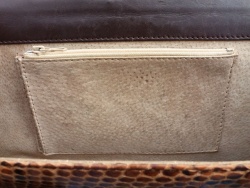
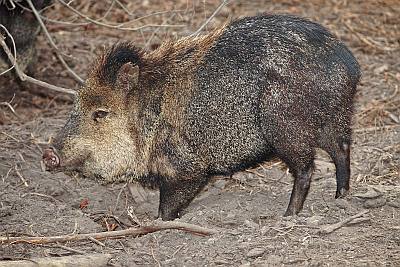
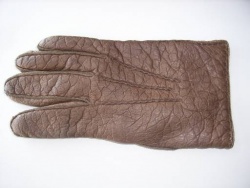
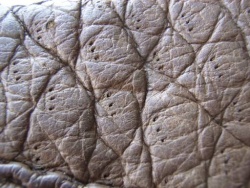
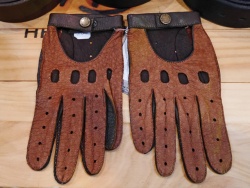
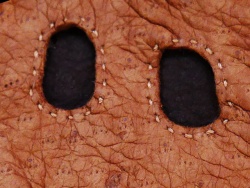
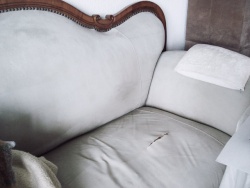
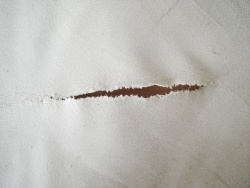
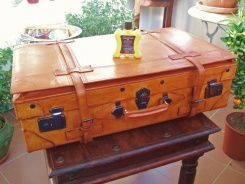
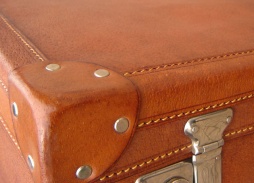
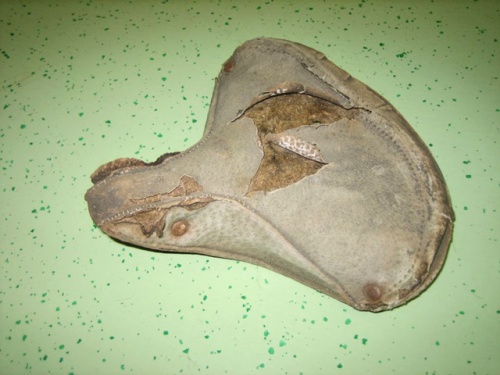

 a kotori web solution
a kotori web solution